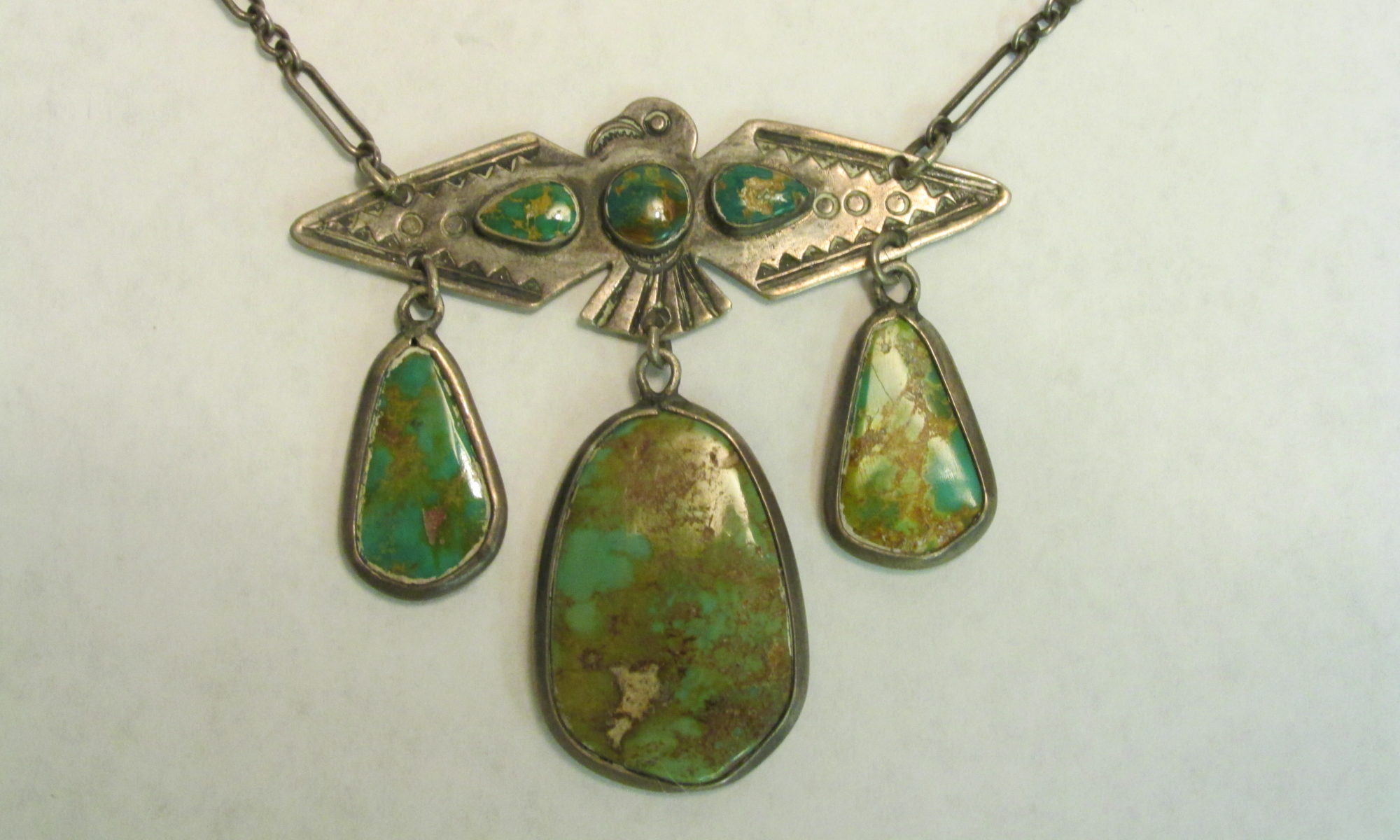
NOTABLY, SIKYATATA BECOMES THE FIRST HOPI SILVERSMITH IN 1898. LIKEWISE, HOPI INDIAN SILVERSMITHS TODAY ARE KNOWN FOR THEIR OVERLAY TECHNIQUE USED IN SILVER JEWELRY DESIGNS. MOREOVER, THE SCARCITY OF SILVER KEPT THE PRIMARY JEWELRY COMPONENTS USED BY THE HOPI TO SHELL AND STONE UNTIL THE 1930S AND 1940S, AND VERY FEW HOPI KNEW HOW TO WORK SILVER.
First of all, in 1946, Willard Beatty, director of the Indian Education for the US Department of the Interior, saw an exhibit of Hopi art and was inspired to develop a silversmithing program for Hopi veterans of World War II. Consequently, the veterans learn cutting, grinding and polishing. Also, they learn die-stamping and sand-casting of stylized Hopi designs. Additionally, the students then teach fellow tribesmen silversmithing, which they use to stylize traditional designs from the decorative patterns of old pottery and baskets.
Initially, the Museum of Northern Arizona encourage the early silversmiths to develop their own style, distinct from neighboring tribes. Most importantly, Victor Coochwytewa is one of the most innovative jewelers – one who is often given credit with adapting the overlay technique to Hopi jewelry. In addition, credit goes to Paul Saufkie and Fred Kabotie. The Hopi Silvercraft Cooperative Guild is organized by these early students. Saufkie’s son Lawrence continues making silver overlay jewelry for more than 60 years.
Overlay involves two layers of silver sheets. One sheet has the design etched into it, and then is soldered onto the second sheet with cut out designs. The background is made darker through oxidation, and the top layer is polished where the bottom layer of silver is allowed to oxidize. The top un-oxidized top layer is made into a cutout design, which allows the dark bottom layer to show through. This technique is still in use today in silver jewelry.
Hopi jeweler Charles Loloma (1921–1991) transformed mid-20th century Native American jewelry by winning major awards with his work that incorporated new materials and techniques. Loloma was the first to use gold and to inlay multiple stones within a piece of jewelry, which completely changed the look of Hopi jewelry.
Tucson Indian Jewelry.com offers a HUGE selection of Hopi Jewelry!
Information furnished by Wikipedia.org ©
